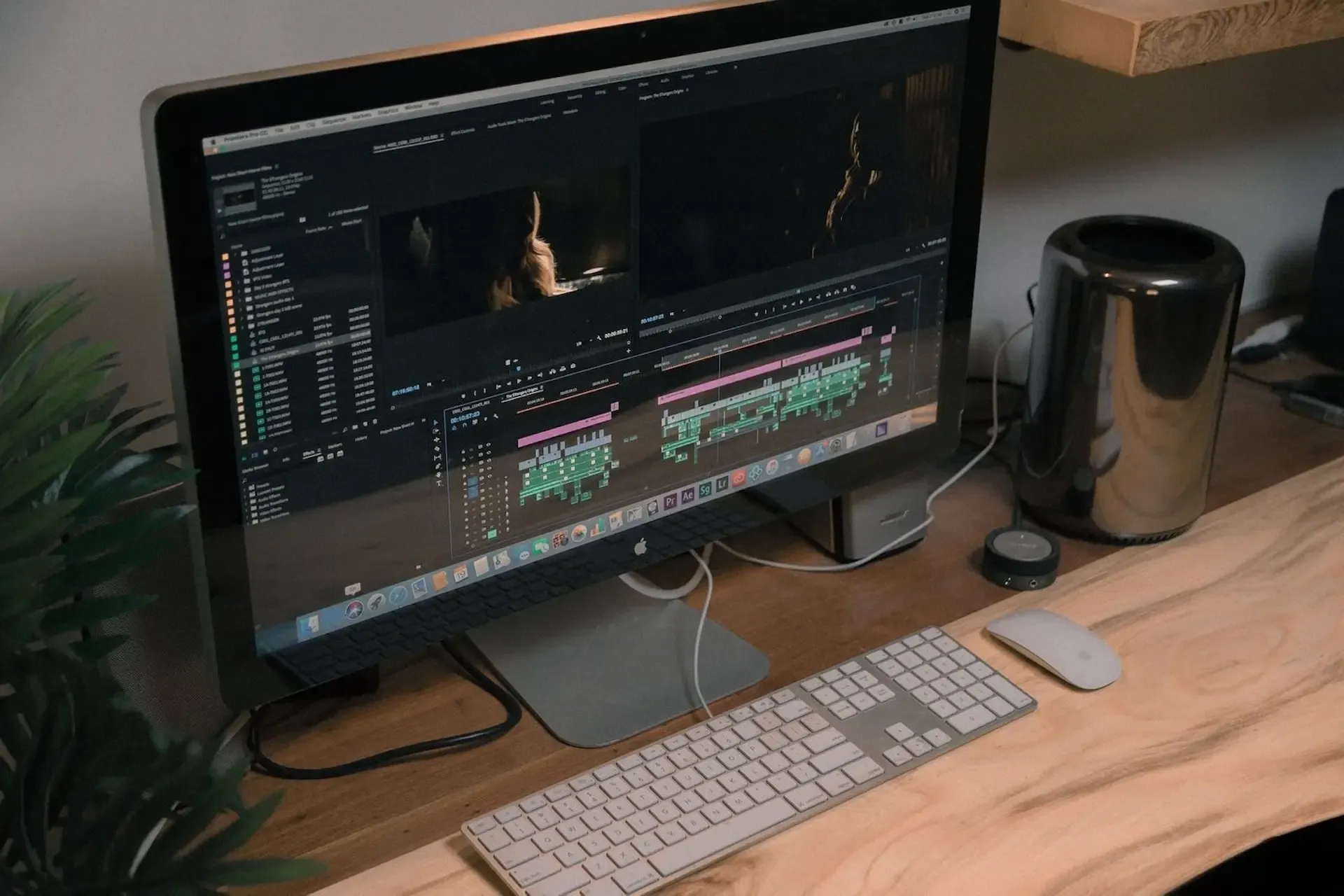The importance and usage of music in post-production
Watching a film without sound is like eating dinner without any flavors. In this blog post, filmmaker Nuno Sá Pessoa goes into depth about the importance and usage of music in videos.

Watching a film without sound is like eating dinner without any flavors. Would you agree? In this blog post, filmmaker Nuno Sá Pessoa, goes into depth about the importance and usage of music in videos. If you’re in the filmmaking process, do give it a read!
Filmmaking is the coming together of many different art forms, one of those art forms is music, and it arguably is the most important. I use music during every single stage of filmmaking, be it as inspiration, a way of better expressing an idea to others, or the guiding principle behind the whole process.
How to choose a soundtrack
When it comes to post-production and, specifically, video editing, music usually takes center stage.
Before I start editing a specific video, I invariably dedicate a long time browsing through different songs, searching for inspiration, looking for that one song that echoes perfection and awakens the urge to bring pictures and sound together.
The process obviously varies depending on the kind of project we’re talking about; a fiction film is different from a corporate video or a documentary.
In what a fiction film is concerned, music is usually the first art form to play a starring role in my creative process. When I have an idea for a script, and I feel I need to write it, I like to choose specific songs and create my very own writing soundtrack; this really gets me into the mood of a specific scene, a certain shot, or a whole genre. It is an outstanding technique, and it certainly keeps the ideas flowing.
When I get to the editing stage, I’ve long before had the whole thing put together in my mind, and seeing it all become a reality is one of the best feelings one can experience.
If the project is, for instance, a corporate or promotional video, then it is likely that when I get to the video editing stage, I still hadn’t selected a specific song. If that’s the case, then, as I’ve mentioned, the quest for the perfect soundtrack becomes crucial.

Cutting to the rhythm
There are many editing techniques involving music. You can, for instance, use music to cut scenes by the beat. You can use a song as a transitional element by having it start during one scene before cutting away to the next one. You can also use the song’s last big beat as the final dramatic cut of the whole film or video.
In case you're cutting to the beat of a specific tune, the soundtrack turns the whole video editing process into a dance, if you lack rhythm, you’re out of luck, the whole thing will probably be a mess, and you’ll end up with a film looking as awkward as someone who hates dancing being forced to dance.
On the other hand, if rhythm is part of who you are, the whole thing will ultimately seem fluid, vibrant, and natural.
Setting the mood
Another very important factor in combining music and pictures is using our very own experience and sensitivity. Knowing how to feel and interpret the soundtrack and combining it with what is happening on the screen is no easy task, a special kind of vision makes a world of difference.
If there’s a certain shift in mood, music is one of the best ways of highlighting it. Imagine a character walking along through the forest when a creepy monster suddenly shows up, and a chase scene occurs. Picture the scene without music, and now picture it with a tense, scary soundtrack. Can you hear the difference?

Theme variations
A specific piece of music can have multiple variations during a film. For instance, a certain character in the film may have a dedicated theme; this same theme can have a multitude of versions that will fit specific scenes. During a sad scene, you may have a sad version of the song, and on the other hand, you may have a happy version of that same piece during a happy scene. This, of course, is usually done when you have a composer who has composed an original soundtrack specifically for that film.
If you don't have different variations of the same song, there's another way of having theme variations, and that’s by using audio stems. An audio stem is a full-length audio file that incorporates an isolated factor or group of components of the same song. This means that if you, for instance, have a song featuring piano, guitar, bass, and vocals, you can choose only to use one of those elements and exclude the others. During a specific scene, you may choose to only use the vocals or the piano track or, alternatively, combine different instruments. This is a great alternative to having specifically composed theme variations, and, thankfully, it's one of Epidemic Sound's features.
Adding sound effects
Another important factor in editing is sound effects, many of the movie’s sound effects go unnoticed to the general public as these are taken for granted since most of the audience, understandably, has no knowledge of how complex the whole process is.
For every action that you see on screen, there is usually some sound design involved in the inclusion of sound effects. Traditionally, these sound effects were produced by Foley artists who would watch the final cut of the film and design specific sounds for each and every on-screen action. In virtually every big-budget Hollywood film, this is still the process of choice. Thankfully, for everyone who doesn’t have Hollywood’s millions, there are banks of sound effects such as Epidemic Sound’s extensive list of 200,000 high-quality unique sound effects and variations.

A famous example
In some cases, directors like to have the soundtrack composed during pre-production. This is something that Sergio Leone and Ennio Morricone famously did. I personally enjoy this technique; it’s very useful for the editing process and during production and rehearsals. While Sergio Leone was filming some scenes of his films, he used to have Ennio Morricone’s soundtrack playing in speakers, this helped the actors really get into the moment and heightened their emotions, later on, the soundtrack would be applied during post-production, when watching his films, we can see how wonderfully this worked out.
Speaking of which, Sergio Leone’s Once Upon a Time in America is actually a perfect example of how incredibly important a soundtrack is for a film.
When Once Upon a Time in America was released in 1984, the film’s original cut was completely destroyed by the studio, who chopped off almost two-thirds of the film before releasing it. On top of that, the studio completely changed the time sequence of the story and distributors even forgot to register Ennio Morricone’s soundtrack. The soundtrack would have possibly even received an Academy Award, as it’s now considered by many, including myself, as one of the best soundtracks in the history of film.
The importance of music and editing is illustrated in the fact that the very same film critic considered Once Upon a Time in America as the worst movie of the year after watching the studio-released version in 1984, just to eight years later, after watching Sergio Leone’s cut, consider it to be the best film of the decade.
Thanks to the advancement of times, whether you are looking for award-winning music or masterful sound effects, you will surely find what you need in the Epidemic Sound catalog!

Brought up among a family of artists, Nuno graduated from the European Film College in Denmark, and worked in countries such as Brazil, Switzerland, and the United States. His films have been shown in more than 200 film festivals from around the globe and he has served as a film festival jury member and film studies lecturer on several occasions.
If you'd like to read more articles by Nuno, head on over to RushRadar and subscribe to their free newsletter!
Related posts:

